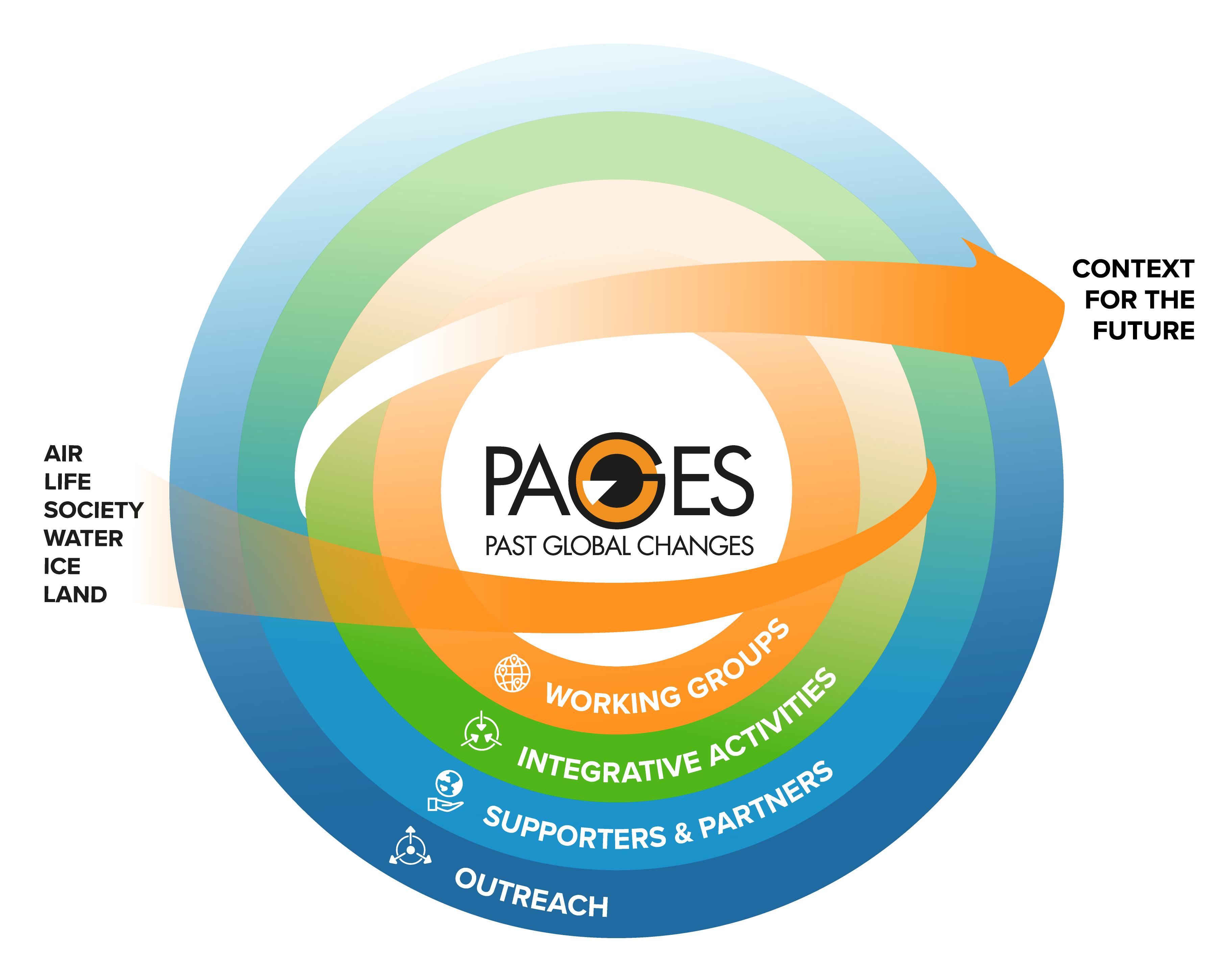- Home
- Science Introduction
- Science Introduction
Science introduction
The core topic of PAGES is the past. PAGES’ science structure addresses changes in key components of the Earth system on various timescales: in particular, phenomena and processes that link the atmosphere, oceans, cryosphere, land surface, biosphere and society.

Atmosphere: Energy, moisture, carbon and aerosol fluxes involve the atmosphere, and atmospheric conditions are an important determinant and indicator of climate change.Their reconstruction are keys to understanding the forcing and response of the Earth system.
Oceans: The ocean is a reservoir of heat, carbon and nutrients, and its circulation determines patterns in ecosystems and regulates the climate. Marine sediments are a key archive of information about past ocean, climate and environmental states.
Cryosphere: The accumulation and destruction of terrestrial and marine ice reflect heat and moisture fluxes in the ocean, atmosphere and land surface, and are part of important feedback climate system processes on a wide spectrum of time scales. They serve as archives of regional and global climate conditions and preserve records of aerosol and greenhouse gas radiative forcing.
Land surface: Carbon, energy and moisture fluxes mediated by land surface conditions are both a response to and a forcing of the conditions in which the biosphere and societies operate. Important regional scale archives of land surface and associated biotic conditions and human activities are preserved in lake sediments.
Biosphere: Structure and development of the biosphere both depends on and influences atmospheric, marine and terrestrial environments. The biosphere provides many basic building blocks of societies, including provisioning and ecosystem services, and in turn responds to human activities.
Society: Human activities both build upon and modify essential aspects of the atmosphere, ocean, land surface and biosphere. Societies record essential aspects of environmental and biospheric change, and archives of past environments and conditions include records of human activities.
Implementation
PAGES' science structure is implemented through the following initiatives:
PAGES Working Groups
Temporary groups that bring scientists together from around the globe to target specific aspects of PAGES' science.
Working groups (currently active or in synthesis stage) as well as the integrative activities are mapped on to the science structure opposite. Learn more about each group by clicking on its title.
The past global change community will be continuously encouraged to propose new working groups, particularly in areas where our science structure is under-populated.
Integrative activities
Cross-topical research areas that have the potential to provide transformative advances in approaches to paleoscience with actionable results relevant to broader impacts. They are particularly suited to collaboration with our parent organization, Future Earth, and our scientific partners, WCRP and WDS-Paleo. At present, three integrative activities have been identified: Data stewardship, Thresholds, tipping points and multiple equilibria in the Earth system, and Extreme events and risk assessment.
Endorsed and affiliated groups
Externally managed groups whose aims directly correlate with our scientific agenda.